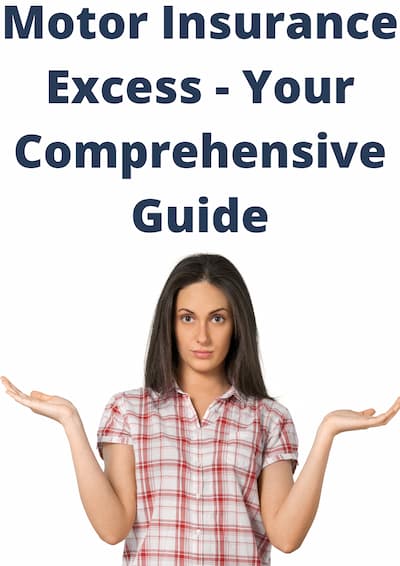Call Monday-Friday 9am - 6pm Closed Saturday & Sunday



[ Contact Us ]
Need Help? Calling from a mobile please call 0151 647 7556
0800 195 4926Do you have a question? or need help?
Call Monday-Friday 9am - 6pm Closed Saturday & Sunday,
Motor insurance is a tricky subject, with people often getting confused about whether they are covered for any given incident or not. This article will explore some of the key questions on motor insurance and how it works, including what the terms "voluntary" and "compulsory" mean when it comes to excess charges.
Motor Insurance is what you need to cover you to drive your vehicle on public roads. It comes in different types, some more comprehensive than others.
Third-Party - this is the minimum compulsory level of motor insurance you must have. It covers you for claims from other people for damage you may cause.
Third Party, Fire and Theft - this will cover you for the same as 'third party' with the addition of cover where your vehicle is stolen or set on fire.
Comprehensive - this will cover you for damage or loss to your car, or a third party vehicle, in the event of an accident. It will also cover you for loss of vehicle due to fire, flood or theft.
Please take a look at our Comprehensive Guide to Motor Insurance.
Excess charge meaning: the excess is the amount that you have to pay towards a claim on your insurance policy. 
For example, if you make a claim for £500 on your home contents insurance, and you have an excess of £100, the insurer may only pay out £400. The remaining £100 is something you would have to pay to insure the claim is settled. This is how it works in most cases of a standard insurance policy excess.
There are some exceptions to certain types of insurance policies. For example, with motor insurance excess there is often a series of different excesses that apply to different parts of the claim.
For example, you may have an excess on the main part of your motor insurance (more about that in a moment) but you may have additional options and features, like windscreen or key cover, that will attract a separate excess deduction.
Compulsory excess car insurance meaning: A compulsory excess is an amount of money that is set by an insurance company that the policyholder must pay to the insurance company when a claim is made. In many cases, the compulsory excess is fixed as part of a quote or a renewal.
So if you have a compulsory excess of £250 on your motor insurance, and you claim for accident damage to your vehicle with a £1,000 repair cost then you must pay £250 towards the repair, with the insurer paying the rest.
Voluntary excess car insurance meaning: Voluntary excess is the amount above the compulsory excess you agree to pay if you make a claim. For example, your compulsory excess is £250 and you choose to have a voluntary excess of up to £250, then you will pay up to the first £500 costs of any claim.
For example, if you make a claim for damage to your car with a cost of £1000 then you will pay £500 (£250 compulsory excess plus £250 voluntary) and the insurer will pay the remaining £500.
So in summary:
Compulsory Excess amount - set by the insurance provider and is your contribution to a claim you may make.
Voluntary Excess amount - set by the policyholder as the contribution, in addition to the compulsory excess, that the policyholder pays towards a claim.
When you provide your details for a car insurance quotation, the car insurance premiums that you have returned include the motor insurance provider's compulsory excess amount.
If you then choose to include a voluntary excess amount you should see the annual car insurance premium reduce.
Why?
Well by adding a voluntary excess to the compulsory excess you are reducing the risk to the car insurance provider in a couple of ways.
This depends on what you are looking for. Paying a higher excess (and you can increase this by selecting a higher voluntary excess at quotation or renewal) should mean your annual car insurance quote premium prices are lower.
The amount by which increasing your voluntary excess affects your car insurance premium will depend from insurer to insurer. If you compare car insurance policies and premiums you will be able to see where you could find cheaper insurance.
However, if you choose to increase your voluntary excess contribution towards your motor insurance then you have to pay excess amounts any time you make a claim.
You have to balance up the cost of your overall motor insurance premium annually against the excess you have to pay if you make a claim.
If you claim your motor insurance that ends up being someone else's fault then you should expect that your motor insurer will claim back any excess, plus claim costs from the third-party insurer.
You may find that you have to pay the excess upfront, when the claim has been finalised, the cost of the excess will be refunded to you.
You can normally only claim your excess back if the claim is proven 100% to be the fault of the third party. If the claim is settled on a 50/50 basis then you may be able to claim 50% of your excess back.
Yes, if the claim is made then the excess amounts set on your premium must be paid by the policyholder for a claim to be settled.
If your motor insurer provides a car insurance quote with a minimum compulsory excess then you would have to pay this in the event of a claim.
Some car insurance quotes may come without any excess requirements at all, although they will normally be reserved for very low-risk policyholders.
This may be because your motor insurer deems the risk you provide as higher, and therefore they want to impose a higher compulsory excess before they accept the risk.
You could be a higher risk for several reasons:
Please note that different drivers named on your motor insurance may attract different compulsory car insurance excess amounts set by your insurer. For example, an older driver with a clean driving license and claim record may require a low car insurance excess. If you add an inexperienced driver with 3 points on their license and a claim in the last year they may attract a high car insurance excess amount.
You can help protect against excess claims by taking out motor excess insurance. This can be utilised in the following way. 
You can take out your motor insurance policy, and add a voluntary excess amount to any compulsory excess the car insurance imposes. Let's say this is a combined £1,000.
You can then take out a Motor Excess Insurance policy to cover you excess costs of £1,000.
This means if you make a claim, pay the £1,000 excess immediately then you can then claim back your £1,000 excess from the Motor Excess Insurance policy.
The main thing to remember is that to be able to claim on a Motor Excess Insurance policy you must pay car insurance excess on a claim first.
So if you have a claim valued at £800 but your combined excess is £1,000 then your motor insurer is not going to settle the claim as the excess threshold has not been reached.
If you claim your motor insurance valued at £1,500, and you have a combined excess of £1,000 then your motor insurer will charge you your excess of £1,000 and settle the remaining £500 of the claim.
In this circumstance, if you have Motor Excess Insurance to cover the £1,000 combined excess, you can send in your receipt of the excess you have paid and claim this back.
Probably not. There are two things to consider here. Firstly, GAP Insurance can only be claimed on when the vehicle is stolen or written off, and declared a total loss by your motor insurer. It is only then, if your excess is deducted by your motor insurer, that the excess contribution from the GAP policy can be claimed.
If you simply have a bump and it is repaired (i.e. the vehicle is not written off) then you cannot claim your excess deduction from the GAP policy.
The second issue is that the excess contributions on GAP Insurance policies tend to be fixed. Your overall excess charge may be more than this. By having a separate, annual motor insurance excess policy you can make sure you can top up the GAP Insurance excess contribution, should you need to.
It depends on your motor insurer but we would expect it not to be a policy feature. However, your motor insurer may offer the product as an add-on to the motor insurance cover.
As long as they adhere to the policy terms, and they are at least a named driver on the motor insurance cover, then all drivers can be covered.